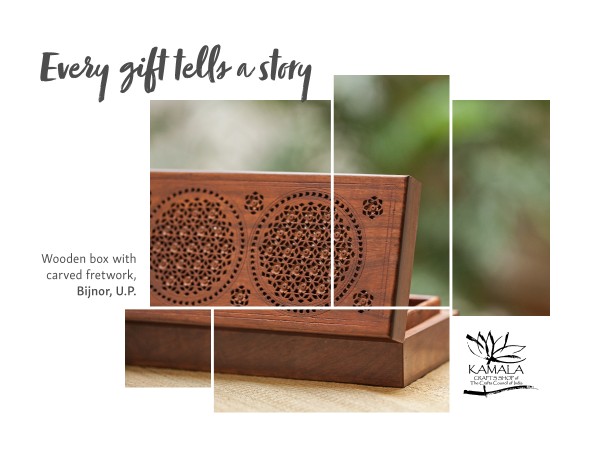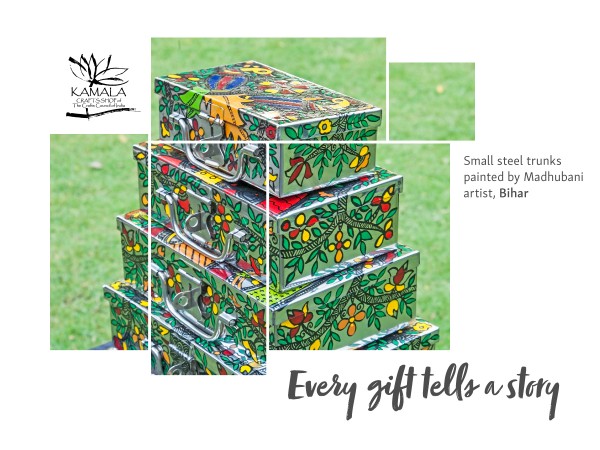‘Why ‘Kamala’ ?
Because it is named for the late Kamaladevi Chattopadhyay, social activist, freedom fighter and most importantly, the force behind the handicrafts movement that began in the 1950s-60s, to the service of the artisan communities, offering a permanent window for high-quality crafts, in some of India’s most important markets.
The first Kamala shop was set up in Delhi in 2005. Almost immediately it became a popular shopping destination and is now a must-visit in travel guides. The equally inviting Kamala Kolkata was set up in 2008. Now, Chennai opens its first Kamala store (January 2017).
True to the discerning spirit of Kamaladevi, the store in Chennai will stock the very best of the crafts and textiles of India. Customers to the Kamala store can expect to see unusual mats, runners, coasters, trivets and serve ware, in wood, terracotta, stone, ceramic and metal; tribal art for walls, trays using folk idioms, painting on wooden boxes, marble with mother of pearl inlay, floor coverings made of the finest grass; an array of bedspreads and table cloths, using applique, block prints, ikkats and other striking weaves; wooden toys, puzzles and craft kits for children. These are in addition to a host of giftables and a collection of handcrafted and hand painted gift boxes.
A handicrafts store cannot be complete without our country’s extraordinary and vast variety of fabrics. Kamala will have handpicked sarees, stoles and blouses featuring heritage textile traditions from across India.
The emphasis is on specially designed products, developed during the course of CCI’s direct and deep interaction with artisan clusters in villages and communities across India, over the last five decades.
Pause to ask more about a craft and you will almost always get to hear a fascinating story about its origins, its makers, its form or its materials – or all at once.
Chennai people, do visit. Others, make it a must-see when you visit Chennai. Come, and keep coming back, to gift yourself a rare shopping treat.
Address of the shop:
“KAMALA”
Crafts Shop of The Crafts Council of India
12, A-C, Co Optex Grounds,
350, Pantheon Road,
Egmore, Chennai- 600 008
Store Open Monday to Saturday
10:30 am to 7:00 pm
(Sunday Holiday)
Phone: 044 – 28191457
Mobile / Whatsapp : +91 98407 00445
Stay tuned to KAMALA Crafts Shop (Chennai) at:

















